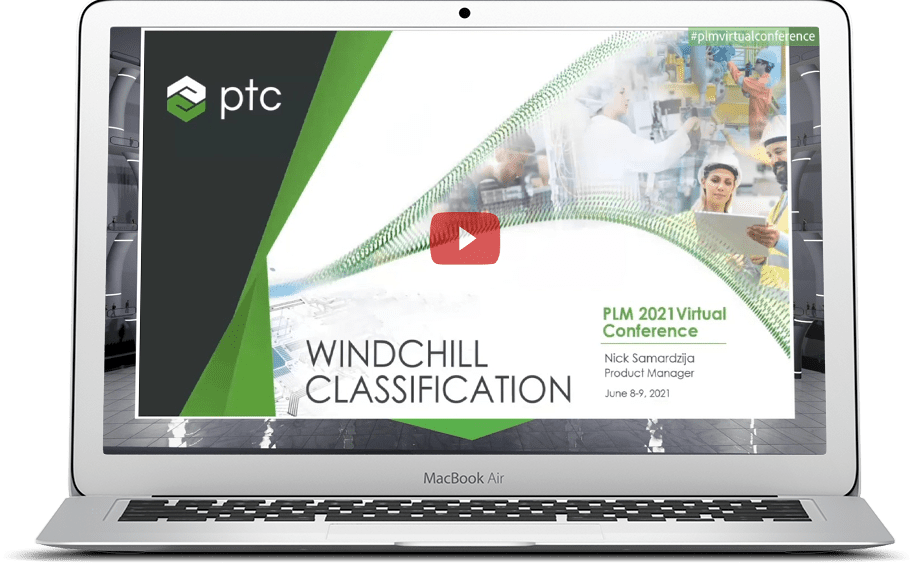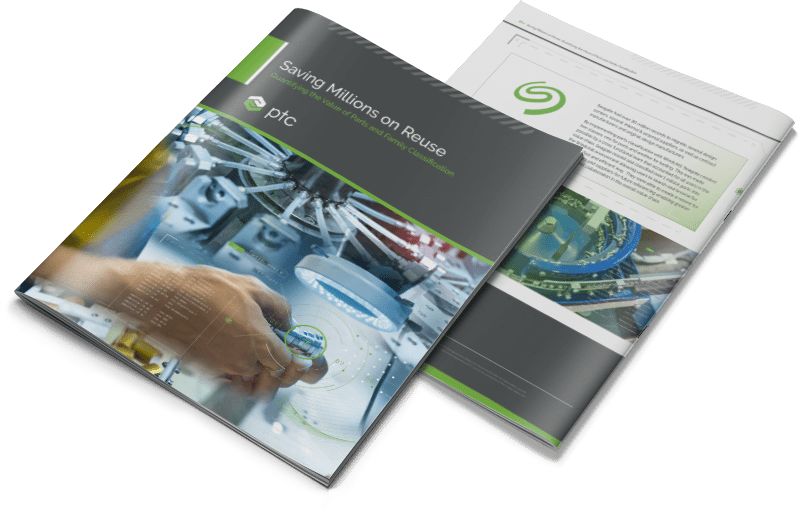Classification of Parts and Reuse Opportunity

TriStar PLM Solutions understands that in today’s world, it is imperative for manufacturers to stay on the cutting edge of innovation – to engineer for choice – and to get products to market quickly. One challenge is that product complexity leads to more parts, which are hard to find and seldomly governed. This results in duplicate parts frequently being introduced. This hurdle can slow progress (and increase costs) across sourcing, manufacturing, quality, sales, and service.
By governing the new part creation process, manufacturers not only benefit from significant cost savings but realize efficiencies and productivity gains through greater reuse and an overall reduction in the part count. Through parts classification, it becomes easier to manufacture and bring higher quality products to market faster.
Classification of Parts – Benefits and Reuse
Classification of Parts – Implementation Early in the Process with Windchill
PTC’s PLM platform, Windchill, ensures parts are classified to align with important attributes such as supplier status and materials used. For example, is the supplier identified as “approved to use and preferred,” “approved to use but not preferred,” or “do not use?” And were the materials used in creating the part made in support of sustainability initiatives? Windchill connects this information across the part lifecycle; as engineers select parts, procurement establishes new part value, and the supply chain strategizes to avoid part and material shortages.
Within the design phase, teams can classify parts by creating a hierarchical taxonomy, making it easy to break parts down by categories including hardware, software, electrical, sourced components, and more. With this taxonomy in place, engineers and design teams can then leverage self-service search functionality on any of the parameters to find an exact or similar part. As parts are classified, the addition of high-quality, accurate data in the form of metadata describing the attributes of the parts also delivers value downstream.
With supplier management (SUMA), the enterprise understands which parts can be sourced from which supplier as a product is being defined. Windchill makes it possible to list and track vendors and manufacturers and their parts.
Here are PTC’s 5 best practices for getting started with parts classification:
- Establish a parts governance strategy to avoid duplicate parts being created
- Assign a new role of Global Module Owner to be responsible for the creation of strategic parts
- Establish a parts classification taxonomy, including supporting attributes, that focuses on commodity parts
- Align taxonomy with important attributes for purchasing and the supply chain (i.e. materials used, availability of materials, supplier classification)
- Expand parts classification taxonomy to include engineered parts (both internal and outsourced)
Classification of Parts – Product Features in Windchill:
Looking For Something Specific?
If you need assistance from TriStar Digital Thread Solutions, call us at 800-800-1714
Here are some more resources that are recommended for you below:
Related Documents
Related Resources
Related Webinars
THE LATEST PLM NEWS AT TRISTAR
TriStar Engage: Digital Thread for Engineering
TriStar’s #Engage Digital Thread for Engineering delivers an industry-best PLM configuration designed for accelerated time-to-value and future scalability. With 25+ years of PLM expertise, TriStar helps clients navigate complex product development challenges with a standardized approach that drives faster success.
How to Choose the Right PLM Software in 2025 Without Falling for Marketing Hype
Choosing the right PLM software in 2025 requires looking beyond marketing claims and feature comparison charts. With vendors emphasizing AI, cloud-based solutions, and extensive feature lists, it's essential to focus on core functionality, integration capabilities, and long-term costs. This article explores key factors to consider, including business needs, vendor reliability, software usability, and total cost of ownership. By evaluating these aspects, companies can make informed decisions and select a PLM system that aligns with their operational goals.
Try the Windchill Navigate Interactive Free Demo – See It in Action!
Experience firsthand how Windchill Navigate simplifies PLM data access and collaboration with an intuitive, web-based interface. This interactive demo lets you explore real-time product data, role-based apps, and seamless collaboration features—all without requiring training. See how it streamlines workflows and enhances decision-making across your organization.











